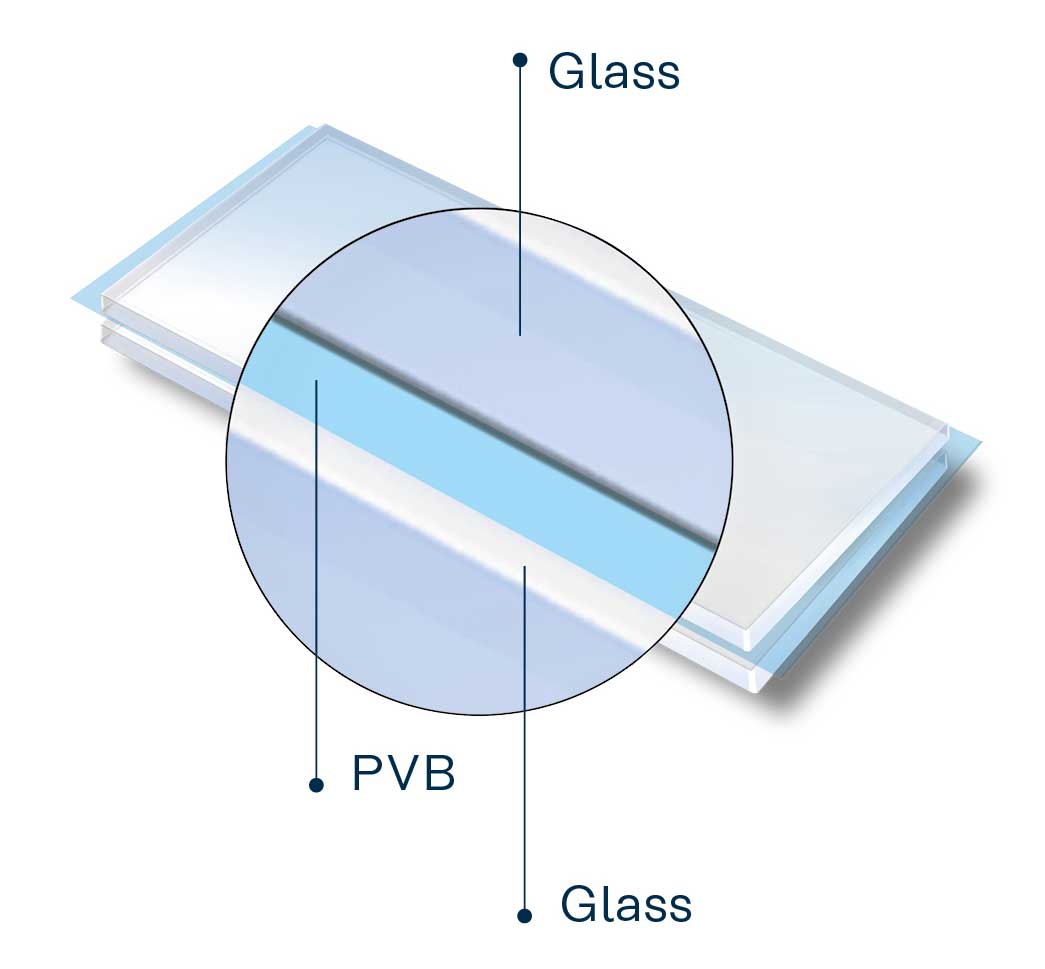Advanced Interlayer Solutions Division Tools & Resources What is laminated safety glass?
All AIS interlayers (except SentryGlas®) are based on polyvinyl butyral (PVB), which has been used as an interlayer in laminated safety glass since the 1930s. Since its launch, constant research and development have resulted in even greater performance, application scope and flexibility. SentryGlas®, a thermoplastic ionoplast, is stronger and stiffer than conventional PVB. New technical solutions are possible thanks to the ability for users to deploy thinner and lighter laminated safety glass panes. The high post-breakage strength of panels laminated with SentryGlas® permits their use in structural glazing applications.

Invented nearly 100 years ago, PVB has been the dominant laminated safety glass interlayer material since the late 1930s. PVB is a resin normally used for applications that require binding, optical clarity, adhesion to glass surfaces, toughness and flexibility. The major application of PVB is as the interlayer in laminated safety glass for architectural purposes and automotive windscreens.
PVB interlayers are tough and ductile, so brittle cracks will not pass from one side of the laminate to the other. PVB interlayers were developed specifically for automotive applications in order to reduce head-impact injuries in car accidents. More than 90% of laminated safety glass interlayers are made from PVB.
In architectural applications, PVB is mostly used in fully-framed windows, insulated glazing units and glass applications, where the edges of the glass are protected. Other types of PVB interlayer include acoustic PVB, which offers improvements in acoustic comfort.
Stiff PVB is used mainly in structural glazing for architectural applications and for aircraft windscreens and offers additional stiffness in fully framed glass applications.
The demands for high performance façades, where the infill glazing material plays an expanded functional role, are continuing to drive the selection of laminated glass in modern architectural projects.
Ionoplast (ionomer-based) interlayers have been in existence for several decades now. However, the most significant market introduction was in 1998 with the launch of SentryGlas® interlayer. This was developed specifically for construction applications, with the focus on improving the structural properties and weather resistance of the laminated glass, rather than PVB.
Over the last 25 years, this interlayer has seen several improved developments. Initially developed for the building envelope protection required for hurricane glazing in the USA and large missile testing requirements, the use of SentryGlas® interlayer has now expanded considerably as structural engineers have recognized that the performance benefits developed for hurricane applications could also be beneficial for many other aspects of a building, including façades, overhead glazing, balustrades, glass floors, staircases, doors and partitions.
Compared to PVB interlayers, SentryGlas® ionoplast interlayer is tougher, 100 times stiffer and performs better over a wider temperature range.